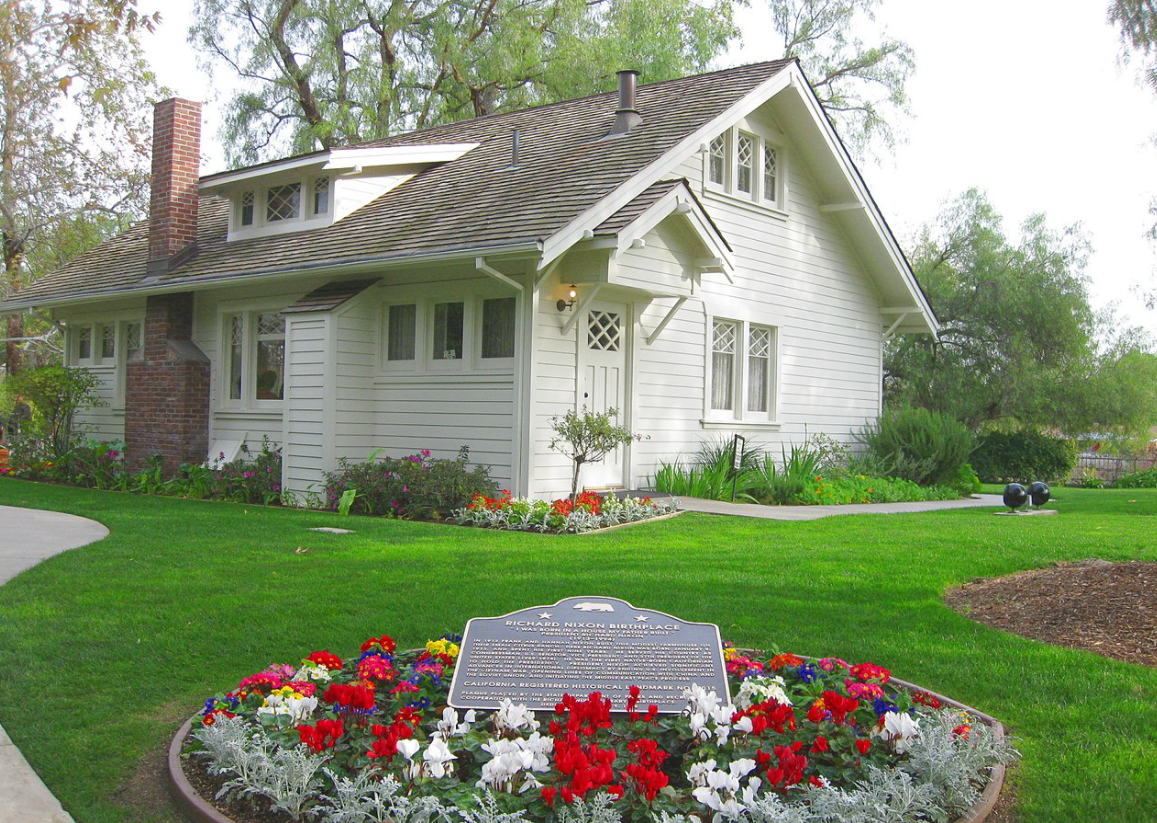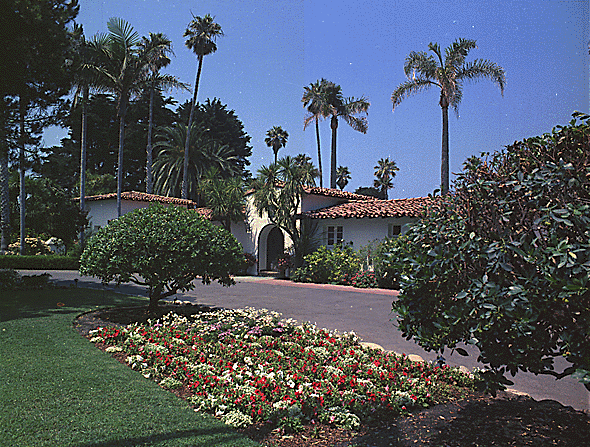
The Richard Nixon Birthplace is the birthplace and early childhood home of Richard Nixon (1913-1994), the 37thPresident of the United States. It is located on the grounds of the Richard Nixon Presidential Library and Museum at 18001 Yorba Linda Boulevard in Yorba Linda, California, and now serves as a historic house museum. Built in 1912 on family ranchland, it was home to the Nixon family until 1922. It was designated a National Historic Landmark in 1973,[3] and is also a California Historical Landmark.[2]

La Casa Pacifica (Spanish for “The Pacific House”; translated also as “The House of Peace”[1]) is a classic California beachfront mansion located in the gated community of Cottons Point Estates/Cypress Shores in the casual South Orange County beach town of San Clemente, California, and overlooks the Pacific Ocean from its blufftop position. This estate is also known as PresidentRichard Nixon‘s Western White House, used while living and working outside of the official presidential residence, the White House in Washington, D.C.
Richard Milhous Nixon (January 9, 1913 – April 22, 1994) was the 37th president of the United States, serving from 1969 until 1974. A member of the Republican Party, Nixon previously served as the 36th vice president from 1953 to 1961, having risen to national prominence as a representative and senator from California. After five years in the White House that saw the conclusion to the U.S. involvement in the Vietnam War, détente with the Soviet Union and China, and the establishment of the Environmental Protection Agency, he became the only president to resign from the office.
Nixon was born into a poor family in a small town in Southern California. He graduated from Duke University School of Law in 1937 and returned to California to practice law. He and his wife Pat moved to Washington in 1942 to work for the federal government. He served on active duty in the Navy Reserve during World War II. He was elected to the House of Representatives in 1946. His pursuit of the Hiss Case established his reputation as a leading anti-Communist which elevated him to national prominence. In 1950, he was elected to the Senate. He was the running mate of Dwight D. Eisenhower, the Republican Party’s presidential nominee in the 1952 election, subsequently serving for eight years in as the vice president. He unsuccessfully ran for president in 1960, narrowly losing to John F. Kennedy. Nixon then lost a race for governor of California to Pat Brown in 1962. In 1968, he ran for the presidency again and was elected, defeating Hubert Humphrey and George Wallace in a close election.
Nixon ended American involvement in the war in Vietnam in 1973, ending the military draft that same year. Nixon’s visit to China in 1972 eventually led to diplomatic relations between the two nations, and he initiated détente and the Anti-Ballistic Missile Treaty with the Soviet Union the same year. His administration generally transferred power from federal control to state control. He imposed wage and price controls for 90 days, enforced desegregation of Southern schools, established the Environmental Protection Agency, and began the War on Cancer. He also presided over the Apollo 11 moon landing, which signaled the end of the moon race. He was re-elected in one of the largest electoral landslides in American history in 1972 when he defeated George McGovern.
In his second term, Nixon ordered an airlift to resupply Israeli losses in the Yom Kippur War, a war which led to the oil crisis at home. By late 1973, the Watergate scandal escalated, costing Nixon much of his political support. On August 9, 1974, he resigned in the face of almost certain impeachment and removal from office—the only time an American president has done so. After his resignation, he was issued a controversial pardon by his successor, Gerald Ford. In 20 years of retirement, Nixon wrote his memoirs and nine other books and undertook many foreign trips, thereby rehabilitating his image into that of an elder statesman and leading expert on foreign affairs. He suffered a debilitating stroke on April 18, 1994, and died four days later at age 81.